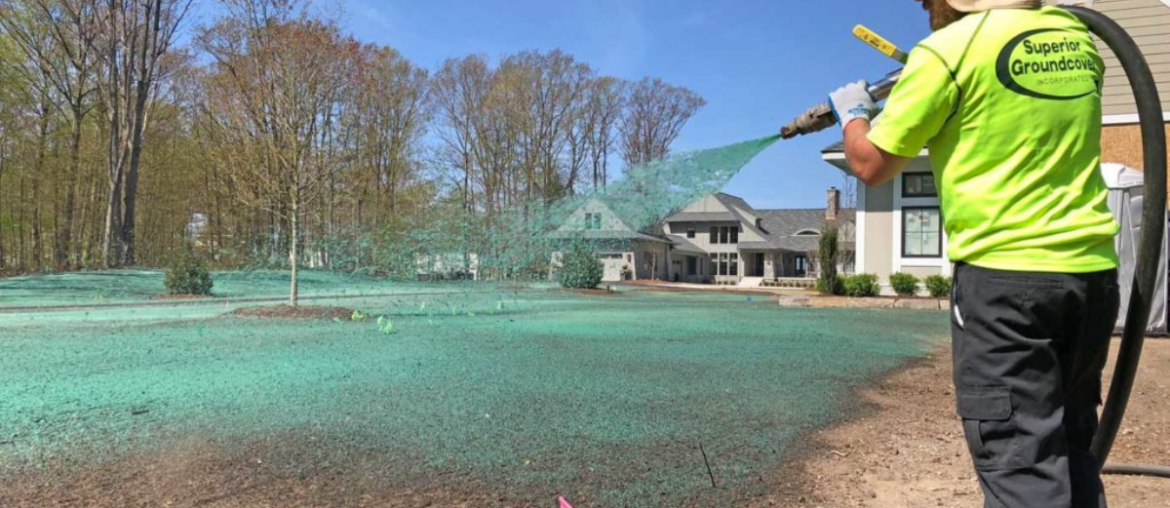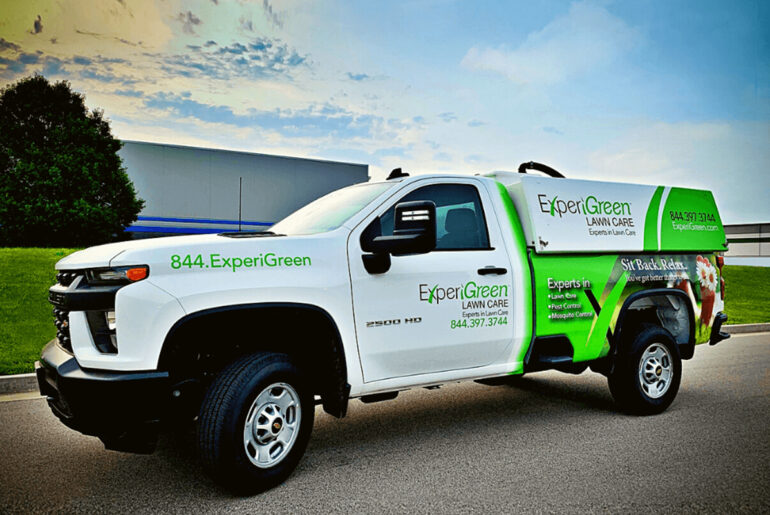Hydroseeding is an effective seeding method for seeding a lawn, a susceptible erosion zone, preparing athletic fields, and preventing weed invasion on freshly turned soil.
Hydroseeding cost estimates range on average from a meager 8 cents to 26 cents per square foot, making it affordable and a practical, quick-growing solution.
Several factors influence the hydroseeding prices on your property: land quality, location, and plot size.
Hydroseeding is an excellent solution versus manual seeding, sod, or artificial turf in that hydroseeding is quick and efficient. A hydro-seeded lawn reduces dust, weeds, and soil erosion and contributes to the environment.
- What is Hydroseeding?
- Hydroseeding and Additional Lawn Care Method Costs
- Costs Associated with Hydroseeding
- Costs Affecting Hydroseeding in Your Area
- Land Prep and Conditions
- Choosing the Hydroseed Type
- Mulching
- How Much Does Hydroseeding Cost for Your Lawn & Garden Project?
- Benefits of Hydroseeding
- The Debate Over Hydroseeding vs. Hydromulching
- Hydroseeding Mulch Balance
- Mistakes Hydroseeder DIY
- Hiring a Hydroseeding Company
- Start Using Lawn Care Business Management Software
- Partnering with RealGreen
- FAQs
- Conclusion
What is Hydroseeding?
Hydroseeding experts use the industry term ‘slurry, ‘ a mixture of seeds, mulch, fertilizer, soil treatment, and water sprayed at high pressure over the exposed terrain.
One of the reasons hydroseeding is cost-effective is the quick return. Seeds usually sprout within 1-2 weeks but remain susceptible to terrain and climate conditions. Hydroseeding is also an excellent method of spreading wildflower seeds or oats.
Hydroseeding and Additional Lawn Care Method Costs
Hydroseeding is a popular lawn planting method. Businesses and homeowners often partner this service with various lawn care maintenance techniques on the lawn and property care spectrum.
Typically, hydroseed costs can be as little as 8 cents per square foot. If other hydroseed costs like mowing, fertilizing, mulching, and automated watering systems are calculated separately, then hydroseeding becomes a less expensive option.
Often, hydroseeding is used in large applications, therefore making it imperative to protect the investment with these added service features.
The cost rises depending on these additional features and soil quality and location—the national average for these rises to 26 cents per square foot.
Costs Associated with Hydroseeding
While hydroseeding is a cost-effective method of growing lawns or fields, land prep and equipment costs are factored into the expense of hydroseeding.
The cost of hydroseeding includes:
- Labor
- Specialized equipment
- Slurry mixture (including water, mulch, seed, & fertilizer)
- Soil prep
To understand your cost involvement, call a certified hydroseed company for an estimate. The national average for a 5000 sq ft lawn on the high end will cost you an estimated $900, while on the low end, expect to pay $400 without any extras.
Hydroseeding is a specialized process, and while it may seem like a good and cost-effective way to tackle it as a DIY project, the result will not be the same as hiring a professional.
For large-scale operations, always negotiate a reduction in price per acre with your hydroseed company.
Costs Affecting Hydroseeding in Your Area
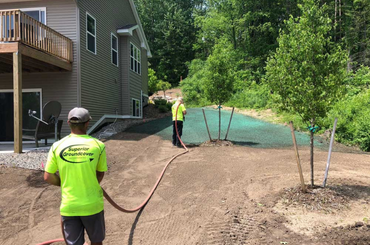
While the national averages suggest a very affordable rate, some circumstances may raise the price substantially.
If you’re in a water-poor area, the cost will rise. Freshly seeded lawns require more frequent watering. Once you calculate water average costs, the price per square foot will increase. Depending on location and climate, a newly planted lawn may require watering (at least) twice daily for good results.
The landscape is another hurdle that new lawns face. A slope will cause uneven water distribution and may be subject to more direct sun exposure and burn portions of the yard.
Water costs in your local area may also affect the cost of hydroseeding.
Fertilizer prices in your area may also be a key factor that influences the cost of hydroseeding.
Exact costs are difficult to extrapolate in sample pricing because there are simply too many variables manipulating the price. The type of seed, the landscape, the location, the terrain, and the water supply influence the cost. However, understanding these variables is a good starting point.
Reputable companies are well aware of these fluctuating variables, and how much hydroseeding typically costs in your state depends mainly on those facts.
Land Prep and Conditions
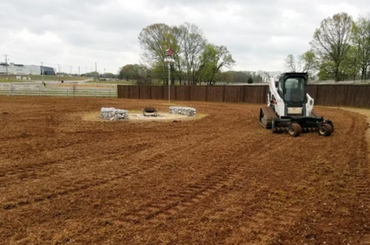
If cost is a concern, consider doing some prep work yourself; albeit, a professional hydroseeder or landscape crew will save you money and time in the long term.
Hydroseed companies understand that a sloped terrain is susceptible to erosion and requires more labor-intensive prep work, spraying, and application considerations.
Sloped areas have a unique relationship with nature’s elements. Improperly sloped areas will only result in seeds being washed away in a rainstorm or burning in excessive sunlight.
A great and easy way to ensure a successful seed application is to do a soil test. Seasoned professionals already understand that PH-balanced soil, free of toxic elements carried over from preexisting construction sites or other land influences, is a crucial starting point for success.
Understanding the soil condition also allows hydroseeders to prepare the best slurry mix for your project.
Choosing the Hydroseed Type
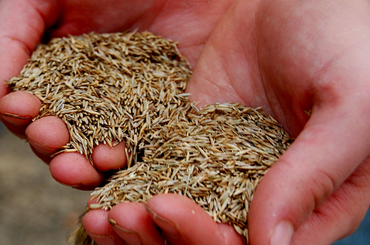
Hydroseeding is a versatile seed application, and home and business owners have many choices. Wildflower seeds are a popular environment- and nature-friendly consideration for larger-scope projects. Typically, wildflower meadows are only mown at season end to promote regrowth the following year.
Ideally, healthy lawn seed applications are best attempted in the spring and/or late summer to early fall to allow your type of grass seed to develop fully. However, consult a growing guide for optimum growing results.
Lawn seed types are plentiful and do not influence the hydroseeding process. Here is a list of popular seed choices that may be ideal for your seeding project.
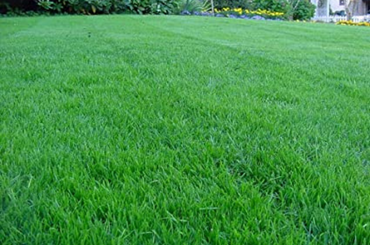
Kentucky bluegrass is probably the most recognizable grass type for lawns. Its vibrant and lush grass makes it ideal for residential lawns. It is more costly but ideal for liquid applications. Despite its name, it is not native to America. Instead, early Spaniards imported the seeds to America, which may be considered invasive.
Bluegrass prefers well-drained, fertilized soil. Its plush carpet and texture make it a favorite, but it has finicky tendencies and requires regular maintenance.
Centipede is a coarse, sod-forming warm-season grass that requires very little maintenance once the grass is established. This feature and its heat tolerance make it ideal for erosion zones and residential lawns and are a popular choice.
One favorite feature for homeowners is that it requires less mowing.
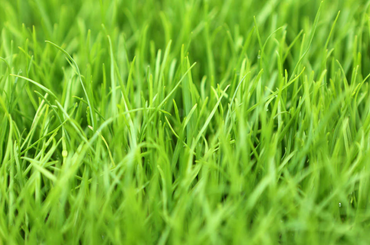
Perennial ryegrass is a coarse, bright, fine-bladed grass and another popular choice in erosion areas. It is one of the fastest-growing grasses and is grown for hay. It is blended with other slower-growing seeds in lawn applications to reduce grass invasion.
Ryegrass is ideal for heavy traffic areas, golf courses, riverbanks, and roadsides for its speedy growth.
Fescue seed is a deep-rooted cool-season grass and highly adaptable to slopes, high traffic, and play areas. It is a very versatile hydraulic mulch seed that easily adapts to its environment and cold and hot climates.
As a lawn, Fescue promotes durability and resilience for a beautiful finish.
Zoysia is a slow-growing warm-season grass. Once established, this blend is ideal for high-traffic areas, and its thick carpet texture is a guard against invasive weeds. Because of its slow-growing quality, it is not suitable as an erosion-preventing grass. However, if Zoysia can establish a firm footing, it becomes a great defense against erosion.
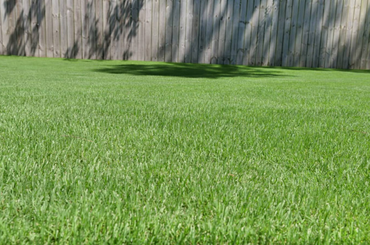
Bermuda grass is a drought-resistant, fast-growing grass. Bermuda is perhaps the most popular choice for hydroseeding and is highly adaptable to various soil conditions. Bermuda grass, sometimes called dog’s tooth grass, comes in several varieties. Golf courses, athletic fields, tennis courts, and areas suitable for denser lawns plant Bermuda grass.
One of the key features of Bermuda grass is its quick recovery time, and it prefers sun over shade.
Wildflower spray seeds are becoming popular replacements for traditional lawns and roadside median applications. Wildflower seed applications transform areas and encourage natural habitats for insects and birds. There are several blends to consider pending your location and the desired effect. Also, consider spring and autumn mixes or attractive butterfly-attracting blends.
Mulching
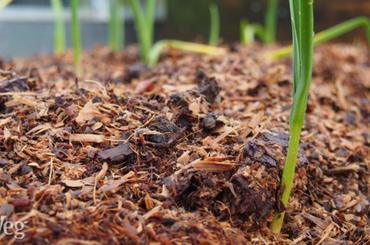
What exactly is mulch, and why is it so beneficial? Mulch acts as a protective blanket in your flower beds, around delicate trees and shrubs, and as a base for lush lawns. Its prime function is to prevent soil moisture loss. This protective feature also impedes weeds from growing and competing for moisture. In cooler climates, it delays frost from penetrating the ground.
Mulch is also beneficial in helping soil develop a better, more arid structure that allows for the better decomposition of materials that create nutrients.
For hydroseeding, also called hydraulic mulch seeding, mulch lends the spray material the texture and weight for a better and more effective application.
Wet mulch, used in hydroseeding, is heavier than the seed that is bound to the mulch. Therefore, a sprayer can reach a broader target large area. Once the mulch blend is on the ground, mulch’s protective blanket quality shields the seeds from blowing away by sticking them tightly to the soil. The mulch itself helps with creating a soil erosion barrier.
Types of Mulch:
In the hydroseed industry, there are several common types of mulch blends used depending on the project’s particulars. These blends are often mixed with synthetic fiber materials, sawdust, and wood particles.
- Wood fiber mulch is best
- Blended mulch consists of 70% wood & 30% paper
- Paper mulch is not ideal for hydroseeding on its own
- Straw is uniform & uses less water
- Erosion control mulch is specifically designed
Wood mulch is the best but most expensive mulch used in hydroseeding applications. It forms a sturdier and more binding blanket, giving the seed a better opportunity for adhering and germinating. Perfect for sloped lawns.
Blended mulch is a cost-effective solution for average-demand home applications. Blends are a good option and less expensive.
Paper mulch can be used for industrial or highway median and flat lawn applications. This is the least costly process, pending the results.
Straw mulch, surprisingly, is ideal for home lawns and water-restricted areas, as the application of straw mulch itself requires less water. Straw mulch also provides a smoother application than other mulch materials.
Erosion control mulch is designed specifically for difficult erosion areas. This mulch is ideal for steep slopes and areas impacted by water runoff.
Hydroseeding is a mechanical process that requires specialized equipment, working knowledge, and hydroseeding materials. Hydroseed mulch is not the same as the varieties used around garden plants and landscaped areas or the same texture or quality as store-bought sacks of garden mulch.
Start Using Lawn Care Software!
How Much Does Hydroseeding Cost for Your Lawn & Garden Project?
Suppose you’ve ruled out costly sod or ineffective self-seeding application methods like using hydroseeding kits, for instance, lawn solutions. In that case, hydroseeding may just be the solution you’re looking for to complete that suburban planning project or home and garden project quickly and efficiently.
How much does it cost to hydroseed? Based on national averages, hydroseeded lawns for average-sized grounds ranging from 5000 to 10,000 sq ft will cost about $1000. On the low end, expect to pay $500, and on the high end, $4000.
However, as already discussed, those costs fluctuate. Cost may tempt the do-it-yourselfers to purchase their own hydroseeder tank (225-gallon capacity) for $1500-$3000 and attempt the prep and maintenance project.
Commercial hydroseeders, needless to say, calculate the average hydroseeding cost of their equipment ($20,000 for a commercial sprayer) and labor cost into the mix. Hiring a professional is a wise solution. On your own, expect to work strenuously for 4-5 hours for just the application process of an average yard.
Mulch compounds
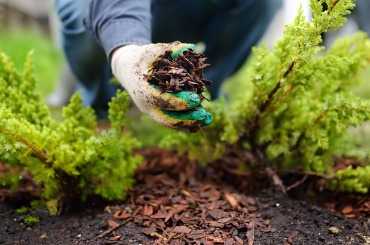
For those intent on completing the task, perhaps for small projects, local hardware and lawn and garden supply stores sell premade mixtures for $20 to $80 per gallon. Again, prep and maintenance are not included in the price.
For spot treatment patches on your green lawn left by dogs, foot traffic, or garden projects, a product like the HydroMousse hydroseed refill package might be a solution. For $19.98/400 sq ft, you can sprout your own Fescue grass. Sprayer not included.
These home-grade mixtures contain minimum wood mulch, paper content, grass seed, colorants, and fertilizer.
Organic or environmentally friendly options sell for around .55 cents per sq ft, while cheaper brands may cost as little as .20 cents per sq ft.
Professionals typically prepare and source industrial hydroseed slurry blends that are not comparable to store-bought mixtures. Commercial mixtures use higher-grade, faster-growing seeds and bonding materials. Normally, commercial hydroseeders calculate time and results into their cost equation. It is not prudent for them to use cheap products.
Cost Chart Based on Current Hydroseed Spray Averages
The average yard in America is around or under 10,000 square feet. A hydroseeder quote may be calculated on hourly cost rather than square footage for smaller yards. A seasoned professional should be able to quote you within a few days.
1000 sq ft costs $200
10,000 sq ft costs $2000
½ acre costs $2250
1 acre costs $3500
Sod Comparison Low Spectrum Cost ($.30 -.83 sq ft)
Sod is a quick fix, but not always a good solution for larger hydroseeding projects.
1000 sq ft costs $300
10,000 sq ft costs $3000
½ acre costs $6534
1 acre costs $13,068
These estimates for sod cost do not include installation or area pre-pep.
Sod Comparison High Spectrum Cost ($.87 – 1.76 sq ft)
1000 sq ft costs $870
10,000 sq ft costs $8,700
½ acre costs $18,949
1 acre costs $37,897
There is no doubt that sod transforms a space instantly. While a tiny yard may be affordable, larger installed sod applications are very costly and not attainable for many businesses and homeowners.
DIY sod installations are also doable on a small scale, but the amount of hard labor for large yards is difficult.
These cost estimates do not consider the type of landscape or the type of lawn grass, which may raise or drop the price accordingly.
Conventional Seed Spreader
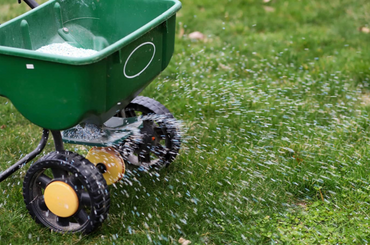
It can’t be argued that some homeowners haven’t had tremendous success with conventional seed-spreading methods.
Manual seeding is the least expensive method. When it comes to hydro grass seed costs, for $1.50 to $6.40 per pound of seed, a person can successfully seed their lawn for a few hundred dollars.
While the cost-saving may sound tempting, the cost to hydroseed on your own is not ideal for erosion areas, kid zones, pet areas, traffic areas, or garden areas with high heat or rain thresholds.
Hand seeding is ideal for smaller or patching projects. The roots of hand-sown seeds are initially stronger than sod solutions and require less maintenance after the original planting.
The downside to manual seeding is that it takes longer for seeds to become durable lawns and remain fragile for up to two months. The seeds are prone to washouts, leaving the freshly seeded lawn patchy. Lawn seeds compete with weeds, and it takes considerably more maintenance than hydroseeding.
Benefits of Hydroseeding
Although hydroseeding has been used in agriculture for nearly a century, it is only now becoming a fashionable and affordable method for home lawn applications.
Popular Commercial applications are:
- Home construction developments,
- Roadsides
- Riverbanks
- Athletic facilities
- Regeneration of burned area
- Parks
- Industrial and business park
- Difficult terrain
The benefits for homeowners are:
- Faster & better results than self-seeding
- Affordable
- Ideal for rugged terrain, larger yards, compounds, and slopes
- Protects landmass against erosion
- Flexibility for seed choice
Anyone choosing hydroseeding must consider that the result is not instantaneous like sod. The hydroseeding process uses high pressure and therefore requires large volumes of water. Freshly hydro seeded areas need protection from foot and vehicle traffic until the grass is well-grown and established.
The Debate Over Hydroseeding vs. Hydromulching
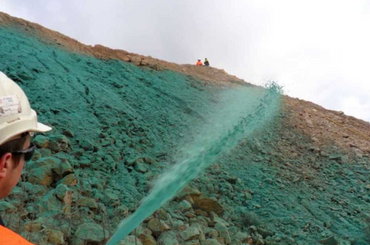
Let’s get this straight. While the process is similar and the terms are thrown around the industry as if one were like the other, it isn’t so.
Hydroseeding is a lawn application to prevent land erosion or to establish a new-growth lawn. Hydroseeding slurry contains seeds, water, wood (or other) mulch fiber, and fertilizer.
Hydromulching is a mulch application to prevent land erosion (often with dye) that contains water, wood fiber, and a tackifier to bind the product to steep slopes and poor-quality soil to prevent land erosion.
Hydromulching is an expensive method used for exposed surface land resulting from fire, road expansion, bridges, and other large-scale, often industrial building projects.
Hydromulching is an effective method to prevent erosion for steep slopes where land erosion can have consequences on nearby roads or structures.
Hydroseeding Mulch Balance
Hydroseeding has built-in fertilizer blends to provide the seeds with a boost to start proliferating.
During a single-pass hydroseeding application, 1500–2000 pounds of wood fiber are used in combination with seeds and fiber. Seeds should always be added to the mixture last and used within a 30-minute timeline.
For steep slope hydro mulching applications, a single pass typically applies 2000–3000 pounds of wood fiber soaked in a tackifier solution for optimum erosion prevention. Wood fiber is a natural tackifier, but a colored tackifier is added for a consistent look for steep gradients.
Mistakes Hydroseeder DIY
Hydroseeding is an art best done by professionals because they have the experience and proper hydroseeding equipment. That, however, shouldn’t deter anyone from tackling smaller projects.
Before you start, consider these:
- Is it the right time? The best and most successful hydroseeding applications occur in warm soil in spring and fall. A torrential downpour or heatwave can destroy a grass crop in one night.
- Are the soil and land adequately prepared to accept the seeds? Providing the hydroseed blend with healthy, well-aerated soil conditions and the gradient is a crucial first step. Hard solid makes it challenging for the seeds to wiggle their fragile roots into the ground. Provide your seeds with optimum soil conditions. Add compost and other soil treatments as suggested by your soil test results for optimum growing.
- Did you water enough? Hydroseeding and hydroseeding aftercare require water applications 2-3 times daily. Consider your local weather. When watering, use a gentle spray, or the seeds will wash away. Find the balance between watering thoroughly and avoiding puddling.
- Did you choose the right fertilizer blend? Grass seedlings have a delicate root system and require a quality fertilizer blend to promote rapid growth. Use a 19-19-19 combination of nitrogen, potassium, and phosphorus. Phosphorus provides root-building nutrients. After 4-6 weeks, use a turf builder fertilizer with a higher nitrogen concentration for top growth. Repeat as per package instructions (8 weeks).
- Did you and your family walk on it? Freshly seeded areas are very fragile. Wet soil compacts when walked on, making it difficult for seedlings to push through. Avoid walking and playing on newly seeded areas for as long as possible (at least 30-40 days). After 4-6 weeks, you may need to cut the grass to stimulate regrowth for healthier roots and grass.
- Did you choose the right seeds for your location? While most grass grows anywhere, some varieties grow better and quicker in some sites.
Hiring a Hydroseeding Company
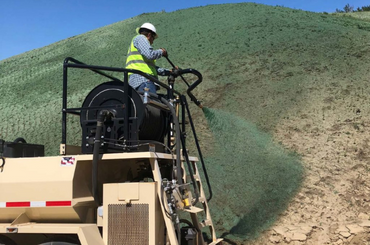
Hydroseeding is really one of those chores that are best left to hydroseeding professionals. Using powerful spray equipment can lead to disastrous outcomes for those not prepared or skilled enough. Hydroseeding requires high power pressure, and the last thing you need is a hydroseed house.
Perhaps you’re concerned that the lawn care company will overcharge or damage your property. Remember, reputable companies rely on their reputation.
- Are you afraid of getting ripped off? First, get a quote and negotiate payment installments—half upfront to cover the cost of materials and the balance when the job is complete. Also, research online reviews and ask for references. Due diligence is your responsibility.
- Have you looked into all the expenses involved in hydroseeding? Hydroseeding isn’t just spraying the slurry. You need the expensive equipment; even for residential sprayers, your outlay will be close to $2,000 just for the spray tank. Seeds may be inexpensive, but once you add the wood fiber mulch, the fertilizer, and the tools you may need for the prep work, a professional may be less expensive.
- Are you aware that hydroseeding may require a special license in your state? Before hydroseeding your yard, make sure that the county and state allow it without getting fined.
- Not all lawn care companies are hydroseeders. Find a hydroseed company that specializes in hydroseeding. If your regular lawn man suggests they can handle the task, make sure they aren’t bringing in a subcontractor, as it may cost you more.
Start Using Lawn Care Business Management Software
The use of software in today’s digital era significantly boosts efficiency and organization, leading to potential business growth.
Lawn care business management software offers features to schedule appointments, track job progress, manage invoices and payments, avoid double bookings, monitor client preferences, and ensure timely payments all on one platform.
Partnering with RealGreen
FAQs
We hope that this article has helped you make informed decisions if hydroseeding is suitable for your home, business, or industrial project. We’ve covered an important topic, but here are a few concerns others have expressed.
Is hydroseeding environmentally friendly?
Consult your hydroseeding company about the components used in their slurry. Preserving topsoil and land quality is an organic way of safeguarding the environment. If you opt for the wildflower package, you’re making a beneficial and powerful impact on nature.
Do I need a different blend for steep slopes?
The steeper the gradient, the more powerful the mixture needs to be. For slopes below 10 degrees and quality soil, no extra is needed. For slopes 20–25 degrees, it’s prudent to double the solution.
How much does it cost to have a lawn resloped?
Re-sloping the gradient of your lawn is a good idea. It saves on labor and watering costs. A professional landscaping company will typically charge $1000-3000 for this job.
Conclusion
Hydroseeding is part of lawn and landscape technology. It’s an excellent opportunity to apply for your home lawn, business complex, or industrial yard needs. Not only will it look good, it will raise property values.
Hydroseeding is an affordable and efficient method of producing grass quickly and preventing further land erosion. Qualified hydroseeding companies manage all aspects of the prep work and spraying. While hydroseeding doesn’t produce instant results like sod, it’s much more cost-effective.

